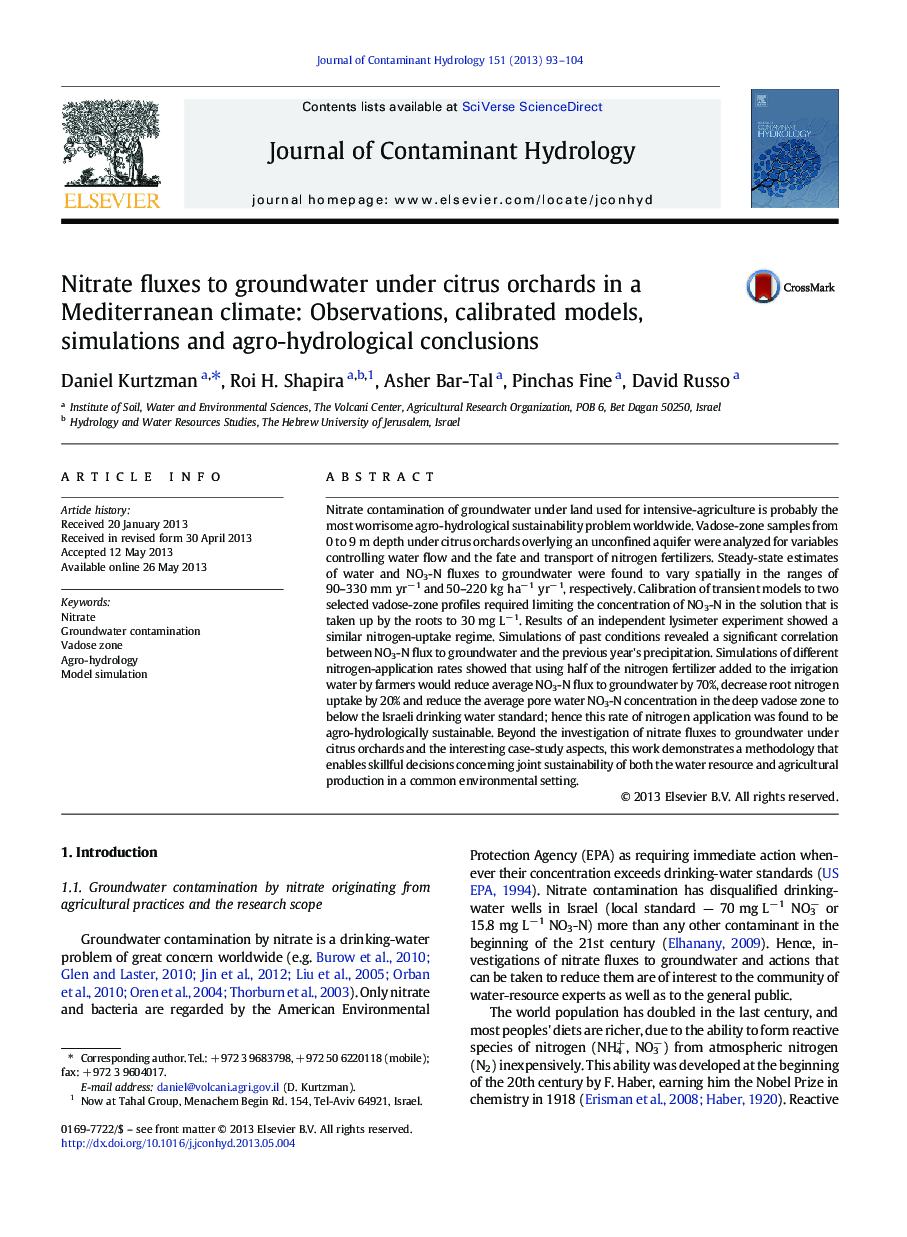| Article ID | Journal | Published Year | Pages | File Type |
|---|---|---|---|---|
| 4546646 | Journal of Contaminant Hydrology | 2013 | 12 Pages |
•A method for obtaining agro-hydrologically sustainable nitrogen application rates•Vadose-zone-calibrated N-transport model validated by a lysimeter experiment•Nitrate fluxes to groundwater were found correlated to previous year precipitation.•Low nitrate concentration in the deep vadose zone is an aquifer-sustainability goal.•Groundwater under clayey soils is less vulnerable to nitrate contamination.
Nitrate contamination of groundwater under land used for intensive-agriculture is probably the most worrisome agro-hydrological sustainability problem worldwide. Vadose-zone samples from 0 to 9 m depth under citrus orchards overlying an unconfined aquifer were analyzed for variables controlling water flow and the fate and transport of nitrogen fertilizers. Steady-state estimates of water and NO3-N fluxes to groundwater were found to vary spatially in the ranges of 90–330 mm yr− 1 and 50–220 kg ha− 1 yr− 1, respectively. Calibration of transient models to two selected vadose-zone profiles required limiting the concentration of NO3-N in the solution that is taken up by the roots to 30 mg L− 1. Results of an independent lysimeter experiment showed a similar nitrogen-uptake regime. Simulations of past conditions revealed a significant correlation between NO3-N flux to groundwater and the previous year's precipitation. Simulations of different nitrogen-application rates showed that using half of the nitrogen fertilizer added to the irrigation water by farmers would reduce average NO3-N flux to groundwater by 70%, decrease root nitrogen uptake by 20% and reduce the average pore water NO3-N concentration in the deep vadose zone to below the Israeli drinking water standard; hence this rate of nitrogen application was found to be agro-hydrologically sustainable. Beyond the investigation of nitrate fluxes to groundwater under citrus orchards and the interesting case-study aspects, this work demonstrates a methodology that enables skillful decisions concerning joint sustainability of both the water resource and agricultural production in a common environmental setting.
